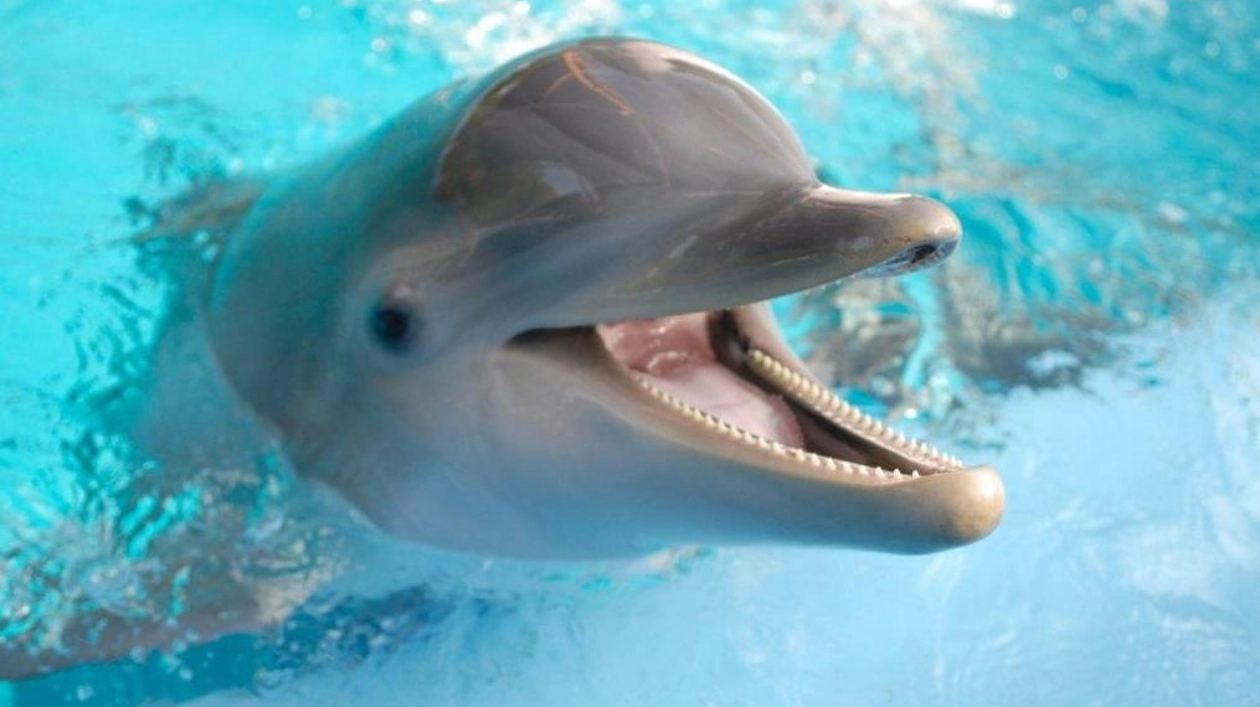Dolphins are often seen with what appear to be big, contagious smiles. But do they actually smile? According to a recent study on dolphin play, the answer is a tentative 'maybe.' Researchers observed that dolphins use their smile-like facial expressions during playful interactions with their mates, suggesting a behavior similar to human laughter. However, other experts caution against attributing human-like behaviors to animals whose intentions are difficult to discern.
Scientists have long known that dolphins can exhibit a behavior called 'open mouth,' which is often interpreted as a smile. Other animals, such as primates, also display a relaxed open mouth during playful contexts. 'It’s a signal that communicates, ‘Look, I’m just playing!’,' says Elisabetta Palagi, a comparative ethologist at the University of Pisa in Italy. 'Like when we put a smiley face on a cell phone message that could be misleading.'
However, this behavior has never been extensively studied in dolphins. Palagi and her team recorded nearly 900 play sessions among 22 captive bottlenosed dolphins, capturing nearly 1,300 'smiles' from 17 animals. The researchers observed dolphins playing alone, with other dolphins, and with humans. They found that dolphins primarily showed their open-mouth behavior while playing with a companion, usually another dolphin. When playing alone, they rarely displayed this behavior. Additionally, about 90 percent of open-mouth expressions occurred when the dolphins were in their playmate’s field of view.
Interestingly, when one dolphin's 'smile' was noticed by another, in about a third of cases, the receiver 'smiled' back within a second. This mirrors the time it takes for humans to perceive and mirror a facial expression. Palagi suggests that the dolphin’s open-mouth expression is 'a very sophisticated form of communication,' possibly used in conjunction with acoustic signals. While it’s challenging to determine if this behavior has the same evolutionary origin as humans’ smile, it likely serves the same function, given the similar context and occurrence.
Animal behavioralist Erin Frick, who was not involved in the study, appreciates the evidence demonstrating the dolphin’s open-mouth behavior in a play context. However, she notes that dolphins also use mouth opening in other contexts, such as displaying aggression. 'I don’t think open mouths are always communicating play. I think they do have a role in play,' says Frick, of Eckerd College in St. Petersburg, Fla.
Palagi, however, believes the open mouth is exclusively used in playful contexts. During aggressive actions, her team did not observe this particular open-mouth behavior. 'During the few aggressions we witnessed, we saw the opening of the mouth, but after this extremely rapid opening, either a bite or an attempted bite followed.'
Despite this, Frick is hesitant to label the behavior as a smile. 'It’s not the same,' she says. 'But it still has a very … functional form in how they communicate.' Comparative psychologist Heather Hill also advises caution in interpreting the apparent smiles. 'I am not super comfortable calling it a ‘smile,’ given that delphinids and whales use the open mouth display in a variety of social contexts,' says Hill, of St. Mary’s University in San Antonio.
Palagi acknowledges the debate surrounding the interpretation of smiling or laughing in nonhuman animals. 'We were extremely conservative and simply referred to facial display,' she says. 'It is not easy to say if [the open mouth] in dolphins conveys an emotional mood or is used to simply communicate to others, ‘Hey, don’t be scared, I am just playing!’, or both.' The team plans to investigate whether the presence of open-mouth behavior affects play sessions, potentially making dolphins play together longer.






